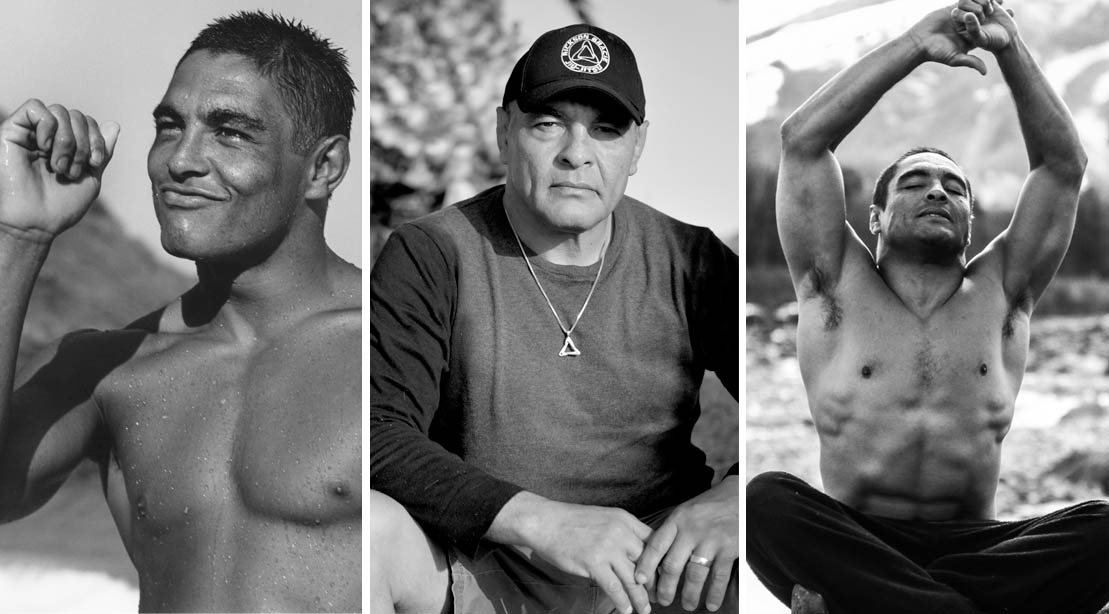28-Days-to-Lean Meal Plan
With the right plan and the right discipline, you can get seriously shredded in just 28 days.
Read article
RIckson Gracie is finally able to exhale, and is hoping others can let out a deep breath as well.
At age 62, after decades of forcing opponents to tap out, the Brazilian jiujitsu icon now spends his mornings tapping into a mindfulness ritual of meditation and yoga, followed by surfing the Pacific waves. As injuries have caused him to scale back his own practice, Gracie proudly takes on the role as teacher and global ambassador. He passes down his expertise of rear-naked chokes and other tap-out classics — moves made famous during his reign as arguably BJJ’s greatest athlete — to his legions of students through his online academy.
Through the experience he chronicles in his recently released New York Times best seller Breathe: A Life in Flow, a new generation can learn the art of becoming comfortable during uncomfortable moments.
“Breathing had always become my invisible edge, whether it be fighting, surfing heavy waves, enduring cold water or to resolve my matters,” he says.
Today, Gracie admits to also spending more time in the kitchen these days — he says he can whip up a chicken casserole or a variety of desserts made from the recipes his mother used cooking for he and his brothers growing up in Rio de Janeiro, Brazil. Back in his prime, Gracie would be whipping the doubters lining up to test him and the legacy of Gracie jiujitsu, created by his father Hélio. With each challenge came the same result: Gracie would submit each foe with brutal precision.
This applied to his professional career as well. Seven of Gracie’s 11 professional MMA wins, mostly fought in Japan during the ‘90s, ended with submissions via rear-naked choke — the other four were by armbar and punches to the face.
But even for BJJ’s best, as his hand was always raised in victory, the pit of his stomach was filled with anxiety and doubt during his early bouts. But when learning how to “breathe,” from an instructor, things began to slowly click. His first was a three 10-minute-round bout against an unbeaten, gigantic opponent — “King Zulu,” who was 50 pounds heavier and more than a decade older than the 19-year-old Gracie.
“I was dead tired,” he recalls. “I asked my dad to stop the fight because I was completely exhausted. He didn’t even listen to me. He told me that [Zulu] was exhausted and now was my time to beat him. Then, just before the bell rings, my brother throws a bucket filled with ice water over my head. Within three minutes, I finished him with a rear-naked choke.”

A theme to his teachings is that through a combination of mindset and breathwork, it’s possible to fight through most types of uncomfortable moments, no matter the size of the situation or opponent: “My worst enemy was my own brain telling me to quit. From that point on I decided to never let my mind work against me.”
His memoir (co-authored by Peter Maguire) shares the roots of Gracie jiujitsu, the battles he incurred by protecting the honor of the Gracie family name, along with the high points and low moments — including the tragic death of his son — of being a jiujitsu icon helped shape and reshape him today.
Gracie shares in this week’s Winning Strategy how a deep breath can help you fight through anxiety, sharing your knowledge with the next generation, evolving your mind at all ages.
”People can relate to obstacles and ways to escape and work toward happiness,” Gracie says. “Of course, I feel a little naked because everybody knows about my intimacy, but on the other hand, I hope I can share with people some examples of what I did through some tough situations to reinvent myself and survive under uncomfortable situations.”

Courtesy of Rickson Gracie

Courtesy of Rickson Gracie

Courtesy of Rickson Gracie

Courtesy of Rickson Gracie

Courtesy of Rickson Gracie